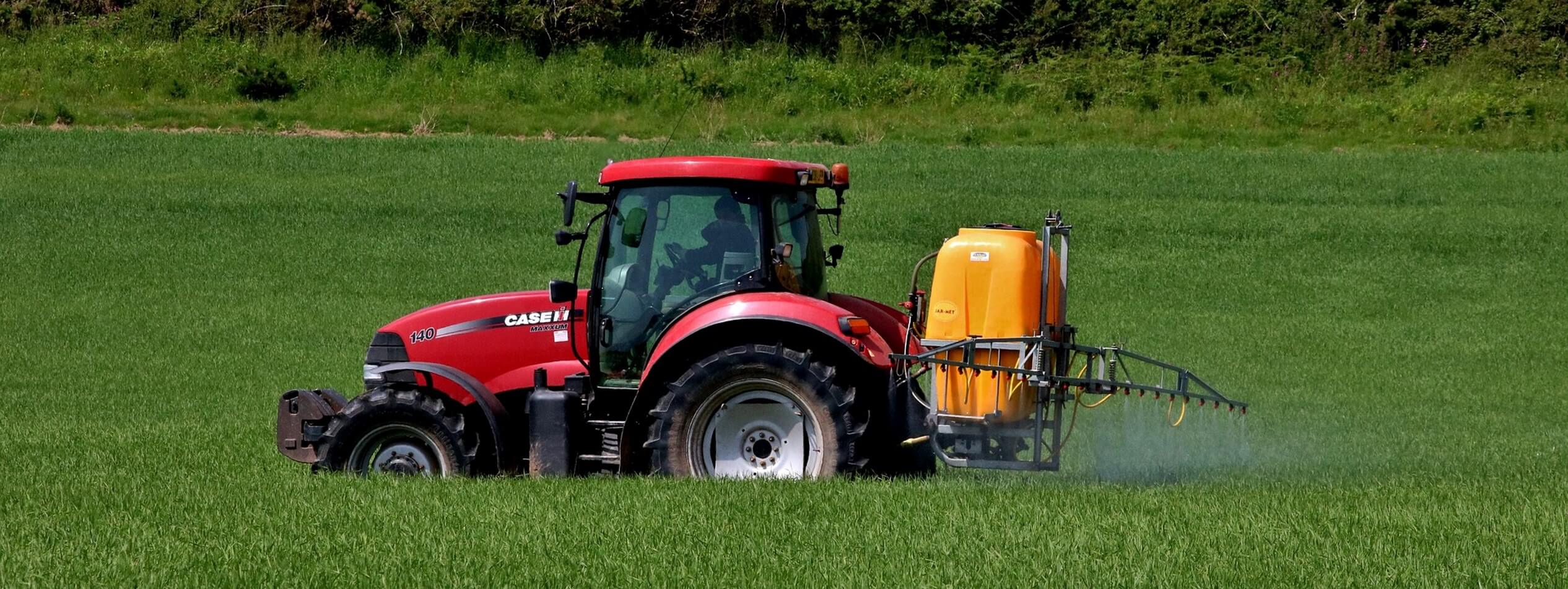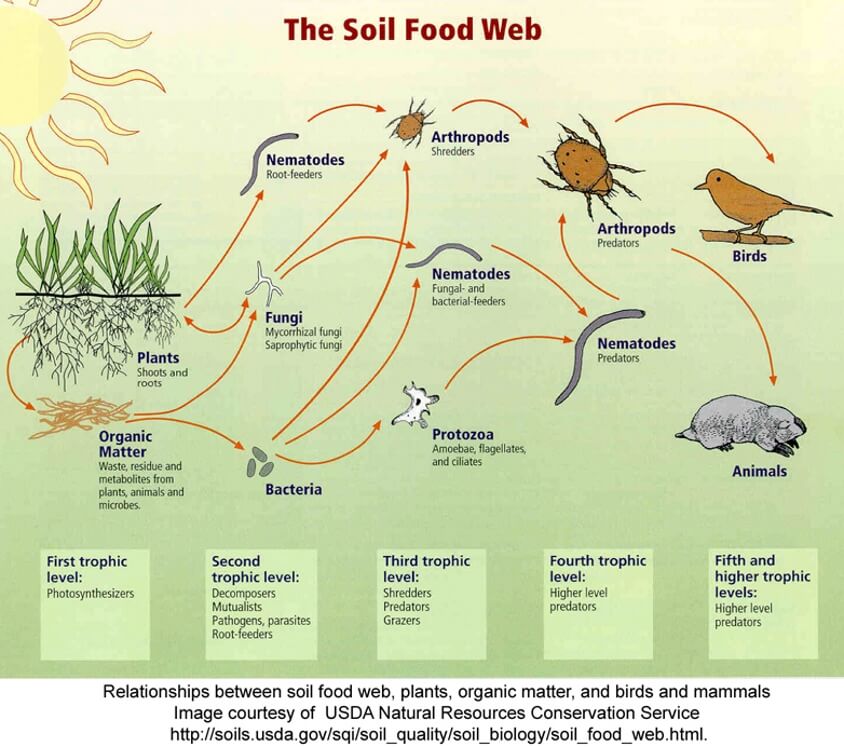Herbicides are supposed to be a useful tool on farms. They are used to control weeds, and get rid of unwanted plants in pastures and crops. Are these herbicides actually helpful though? They are actually harming the farm. I understand that this is quite a bold statement, but I would go even further and say all herbicides are harmful. I am also fully aware of all the research that could be thrown my way showing that herbicides do not necessarily have a negative impact.
We first need to ask, a negative impact on what? The usual response is, an impact on the environment. The environment is many things though. It consists of: the soil, water resources, biodiversity, and the atmosphere. Herbicides have an impact on all of these, and as much as it is worth discussing each component, it is beyond the scope of this blog. I will focus on addressing the question from a soil perspective.
Do herbicides have a harmful impact on the soil?
It may be controversial to categorically say that herbicides have a negative impact on the soil. Especially saying it so broadly. Herbicides vary greatly with regards to their active ingredients, and therefore the way they work. My main area of concern in the soil is the biology – the impact herbicides have on the diversity and abundance of life in the soil.
There has been a lot of research conducted about the impact of applying herbicides. Most of the research has been done on glyphosate, as this is the most widely used herbicide globally. The problem with all this research is that there is a full spectrum of findings showing positive, negative and negligible effects on soil biology associated with applying herbicides. This does not help much, because depending on your perspective, you can choose your argument, backing it up with scientific research. We shall have to dig a bit deeper.
The problem with all this research is that there is a full spectrum of findings showing positive, negative and negligible effects on soil biology associated with applying herbicides.
How is soil life measured?
A challenge when assessing the impact of herbicides on soil life is in measuring the life in the soil before and after application. There are a multitude of tests which give an indication of the life in the soil. These can be broadly grouped into abundance and diversity. Abundance says how much life there is. Diversity says how many different types of organisms there are, and which organisms. Together, they give a picture of the ability of the soil life to fulfil all their functions.
In order for a soil to be healthy, it requires the full soil food web to be present and functioning.
In order for a soil to be healthy, it requires the full soil food web to be present and functioning. When only abundance is measured, it does not tell us if there is the full diversity of organisms making up the food web. When only the diversity is measured, it does not tell us how many organisms there are.
One of the most commonly used measures for the impact of herbicides on the soil is microbial biomass. The problem with this test is that it only measures abundance, and not diversity. Other similar tests include soil respiration and carbon mineralisation. A lot of the research done on herbicides, especially glyphosate, has shown a positive response in microbial biomass, soil respiration and/or carbon mineralisation to herbicide applications. This just tells us that the abundance of life increased, but not which life.
It is all about the balance
When research has been carried out on specific organisms, for example bacteria or fungi, the results have been more insightful. Some of the research done on mycorrhizal fungi has shown the negative effect of herbicides on these organisms. These means that some of the life can be increasing, while other life is decreasing.
This is the main reason why I can confidently state that herbicides are harmful to soil life. As stated earlier, our goal from a healthy soil perspective, is a fully functioning, balanced soil food web. Herbicides influence this balance.
As a general trend, herbicides have been shown to have a negative impact on fungi, and a positive effect on bacteria. Herbicides have also been shown to negatively effect earthworms, and other arthropods. These effects can be direct, through contact between the herbicide and the organisms. Or indirect, through the influence herbicides have on the plant, and therefore root, population. An indirect effect could also result from the knock-on influence of a species or trophic level of the food web being eliminated, thereby breaking the food chain and collapsing the web.
This is not the place to get into the complexity behind how all these effects take place. What I think is important to understand, and acknowledge, is that herbicides are changing the soil food web in agricultural soils in detrimental ways. They are supporting the dominance of certain organisms, at the expense of others. The contradictory nature of a lot of the research just tells us that we do not even fully understand how and to what extent.
What is the solution?
This is the difficult part. The solution is to use no herbicides. This does not address the problem of undesired plants, be that weeds or in changing from one crop to another. One of the few effective alternatives to herbicides is tilling the soil, which we know is not an option due to its extreme negative impact on soil structure and life.
I would suggest by starting with the principle of using as little herbicides as possible, only when absolutely necessary. There is no need to spray the maximum recommended rate of herbicide at the first sight of a weed. Through making use of mowing and grazing management, you can start controlling crops and pastures for the desired plant species. By improving soil health, and building Thriving soil ecosystems the desired plant species will thrive and out-compete weeds, which decreases the need for herbicides. Weeds can actually be used to indicate an underlying issue.
I do not have a straightforward alternative to the use of herbicides in strategically changing crop and pasture types. I think it is important that we start considering alternatives to the current system though, as it is not sustainable.
Sources
García-Orenes F, Guerrero C, Roldán A, Mataix-Solera J, Cerdà A, Campoy M, Zornoza R, Bárcenas G, Caravaca F. 2010. Soil microbial biomass and activity under different agricultural management systems in a semiarid Mediterranean agroecosystem. Soil and Tillage Research 109(2):110-115.
Haney RL, Senseman SA, Hons FM, Zuberer DA. 2000. Effect of glyphosate on soil microbial activity and biomass. Weed Science 48(1):89-93.
Hussain S, Siddique T, Saleem M, Arshad M, Khalid A. 2009. Impact of pesticides on soil microbial diversity, enzymes, and biochemical reactions. Advances in agronomy 102:159-200.
Rose MT, Cavagnaro TR, Scanlan CA, Rose TJ, Vancov T, Kimber S, Kennedy IR, Kookana RS, Van Zwieten L. 2016. Impact of herbicides on soil biology and function. Advances in agronomy 136:133-220.
Guest blog: A look into glyphosate and soil health – Accessed 06 May 2019
The impact of glyphosate on soil health: The evidence to date – Accessed 06 May 2019
- A carbon footprint assessment for pasture-based dairy farming systems in South Africa - 2024-02-07
- What progress have farms participating with Trace & Save made over the past 10 years? - 2023-09-06
- Carbon footprint reduction over time: Lessons from pasture-based dairy farms in South Africa - 2023-09-04


